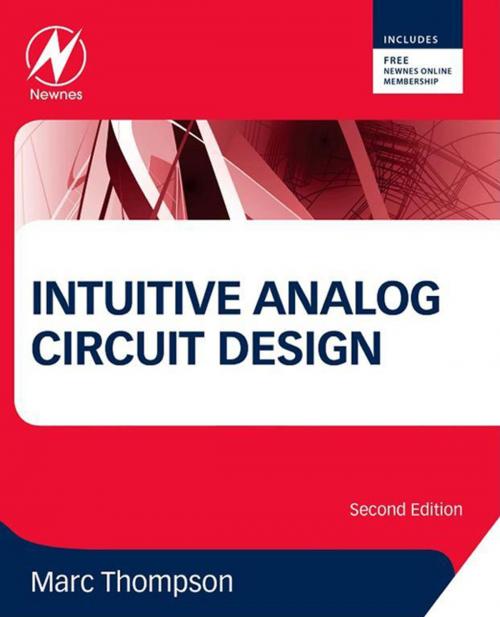| Author: | Marc Thompson | ISBN: | 9780124059085 |
| Publisher: | Elsevier Science | Publication: | November 12, 2013 |
| Imprint: | Newnes | Language: | English |
| Author: | Marc Thompson |
| ISBN: | 9780124059085 |
| Publisher: | Elsevier Science |
| Publication: | November 12, 2013 |
| Imprint: | Newnes |
| Language: | English |
Intuitive Analog Circuit Design outlines ways of thinking about analog circuits and systems that let you develop a feel for what a good, working analog circuit design should be. This book reflects author Marc Thompson's 30 years of experience designing analog and power electronics circuits and teaching graduate-level analog circuit design, and is the ideal reference for anyone who needs a straightforward introduction to the subject.
In this book, Dr. Thompson describes intuitive and "back-of-the-envelope" techniques for designing and analyzing analog circuits, including transistor amplifiers (CMOS, JFET, and bipolar), transistor switching, noise in analog circuits, thermal circuit design, magnetic circuit design, and control systems. The application of some simple rules of thumb and design techniques is the first step in developing an intuitive understanding of the behavior of complex electrical systems.
Introducing analog circuit design with a minimum of mathematics, this book uses numerous real-world examples to help you make the transition to analog design. The second edition is an ideal introductory text for anyone new to the area of analog circuit design.
- LTSPICE files and PowerPoint files available online to assist readers and instructors in simulating circuits found in the text
- Design examples are used throughout the text, along with end-of-chapter examples
- Covers real-world parasitic elements in circuit design and their effects
Intuitive Analog Circuit Design outlines ways of thinking about analog circuits and systems that let you develop a feel for what a good, working analog circuit design should be. This book reflects author Marc Thompson's 30 years of experience designing analog and power electronics circuits and teaching graduate-level analog circuit design, and is the ideal reference for anyone who needs a straightforward introduction to the subject.
In this book, Dr. Thompson describes intuitive and "back-of-the-envelope" techniques for designing and analyzing analog circuits, including transistor amplifiers (CMOS, JFET, and bipolar), transistor switching, noise in analog circuits, thermal circuit design, magnetic circuit design, and control systems. The application of some simple rules of thumb and design techniques is the first step in developing an intuitive understanding of the behavior of complex electrical systems.
Introducing analog circuit design with a minimum of mathematics, this book uses numerous real-world examples to help you make the transition to analog design. The second edition is an ideal introductory text for anyone new to the area of analog circuit design.
- LTSPICE files and PowerPoint files available online to assist readers and instructors in simulating circuits found in the text
- Design examples are used throughout the text, along with end-of-chapter examples
- Covers real-world parasitic elements in circuit design and their effects















